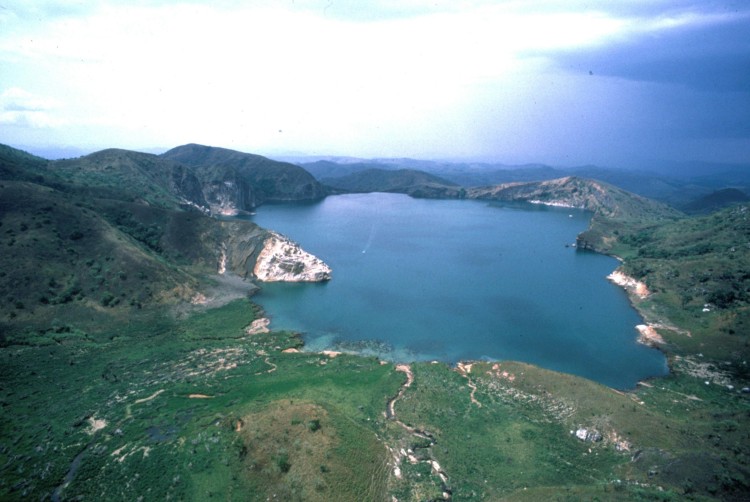It was a tenth of that, 100,000 tons, that caused the Lake Nyos disaster
7000 ft below the city of Decatur, Illinois, population 74,710 people, is a high pressure reservoir which contains 1 million tons of CO2.
From the press release:
One of the largest carbon sequestration projects in the U.S., the Illinois Basin - Decatur Project (IBDP) has reached its goal of capturing 1 million metric tons of carbon dioxide and injecting it deep underground in the Mount Simon Sandstone formation beneath Decatur, Illinois. The project is designed to demonstrate the feasibility of carbon capture and storage. IBDP director Robert Finley talked about the million-ton milestone with News Bureau physical sciences editor Liz Ahlberg. Finley is director of the Advanced Energy Technology Institute at the Illinois State Geological Survey, part of the Prairie Research Institute at the University of Illinois.The reservoir has been created to demonstrate the viability of carbon sequestration - capturing large quantities on carbon, to prevent the CO2 from being emitted into the atmosphere.
The University of Illinois scientists responsible for this demonstration project assure us that the reservoir does not pose a safety threat. According to a University of Illinois press release;
"Extensive monitoring takes place during and after injection to be sure the stored CO2 stays in place. Monitoring techniques include using geophysical technology to confirm the position of the CO2 underground and wells to monitor groundwater and soils.They're probably right - when you create a demonstration project, a showpiece for what you hope will become a lucrative business, you want to make sure nothing goes wrong. I'm sure that elaborate precautions have been taken to prevent any possibility of adverse news, in the hope that this reservoir will be the first of many.
No out-of-bounds health, safety or environmental risks were observed from this properly designed and managed storage site. Appropriate risk mitigation and management plans were an integral part of the overall project planning. Extensive monitoring took place before, during and now after the injection to be sure the CO2 stays in place. The first line of monitoring begins deep below the ground, so we know if any leakage occurs long before any CO2 might reach the surface."
http://illinois.edu/emailer/newsletter/65417.html
However, as the scientists responsible for the project admit, a serious carbon sequestration effort will need to store a lot more than a million tons of CO2. "... One million tons is scalable in its behavior to the 3 million tons that would be emitted annually from a typical medium-sized, coal-fired power plant. ..."
If just one of those proposed sequestration projects suffers a major containment breach, say if an earthquake cracks the geological structure, or if a mistake or greed leads to the reservoir being overloaded, the result could be a disaster.
In Africa, in 1986, an abrupt release of an estimated 100,000 - 300,000 tons of CO2 killed 2,500 people up to 25km (15.5 miles) from the source of the release.
http://en.wikipedia.org/wiki/Lake_Nyos#1986_disaster
A similar release near a major city would kill a sizeable fraction of the city's population. The region of devestation was comparable to the loss of life which would be caused by a large nuclear explosion - the only reason a lot more people didn't die, was Lake Nyos is a sparsely inhabited rural region.
The Lake Nyos CO2 release was so deadly, because CO2 is heavier than air - when the huge CO2 cloud boiled out of lake Nyos, it hugged the ground, displacing all breathable air to an elevation 10s of ft above ground level, suffocating almost everyone in its path.
Its not just people and animals which would be affected - car engines would also stall, as the blanket of CO2 choked off the supply of oxygen.
If carbon sequestration becomes commonplace, sooner or later someone will get greedy and careless, and will be careless in their choice of geological reservoir, and / or will overload their geological reservoir to boost their bottom line. And that carelessness will, in my opinion, almost inevitably lead to a catastrophic loss of life.




Splitting carbon dioxide (CO2) into carbon and oxygen can in fact be accomplished, but there is a catch: doing so requires energy. If hydrocarbon fuels, which produce the greenhouse gas in the first place, supply that energy, thermodynamics tells us that the net result will be more CO2 than you started with